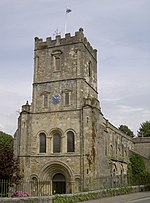Tutshill for Beachley Halt railway station
ChepstowDisused railway stations in GloucestershireFormer Great Western Railway stationsGloucestershire building and structure stubsPages with no open date in Infobox station ... and 5 more
Railway stations in Great Britain closed in 1959Railway stations in Great Britain opened in 1934South West England railway station stubsTidenhamUse British English from July 2017
Tutshill for Beachley Halt was a request stop on the South Wales Railway (now known as the Gloucester to Newport Line) and Wye Valley Railway. It was opened on 9 July 1934, and was intended to serve the nearby village of Tutshill. However, though the station was situated a short distance from the junction of the Wye Valley Railway and was still on the main line, the only trains which served the small halt were from the Wye Valley Railway and when the line closed on 5 January 1959, the stop closed with it.The station was built nearby to the site of Chepstow East Station, temporarily opened between 1851 and 1852.
Excerpt from the Wikipedia article Tutshill for Beachley Halt railway station (License: CC BY-SA 3.0, Authors).Tutshill for Beachley Halt railway station
Sedbury Lane, Forest of Dean Tidenham
Geographical coordinates (GPS) Address External links Nearby Places Show on map
Geographical coordinates (GPS)
| Latitude | Longitude |
|---|---|
| N 51.6466 ° | E -2.659 ° |
Address
Tutshill for Beachley
Sedbury Lane
NP16 7FT Forest of Dean, Tidenham
England, United Kingdom
Open on Google Maps









